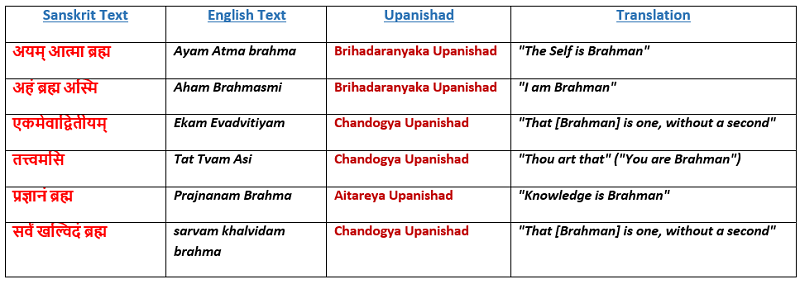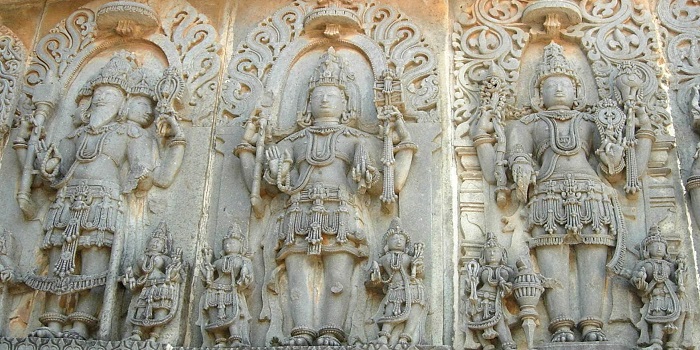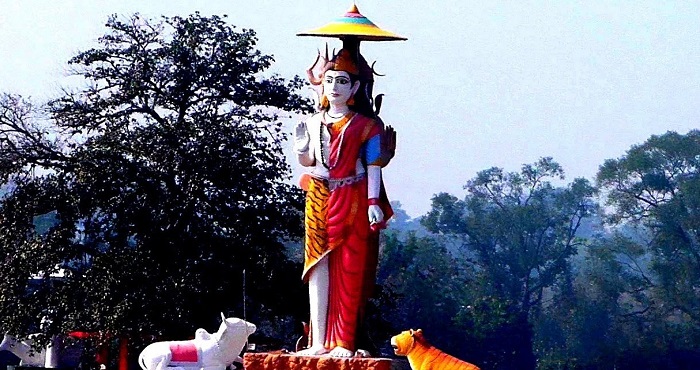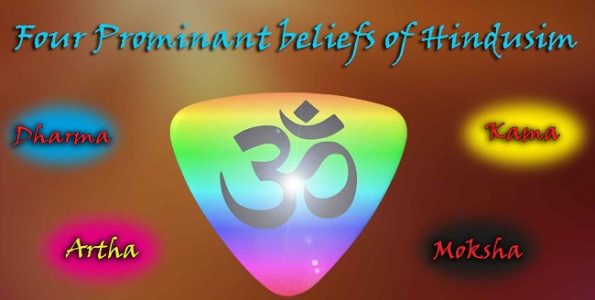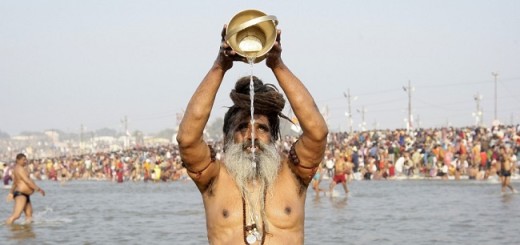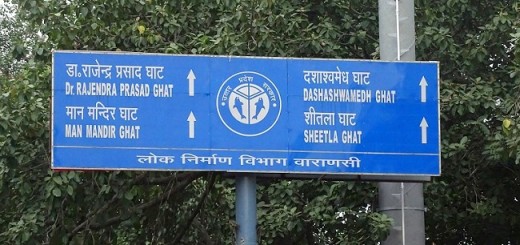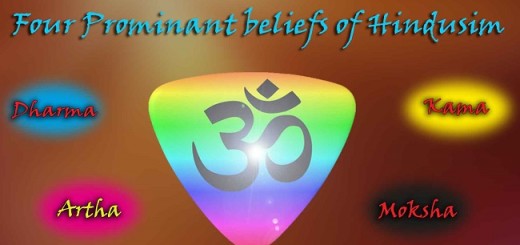Major Beliefs of Hinduism And Practices
In our previous articles, we have covered amazing facts about Hinduism, different symbols in Hinduism and their meanings and list of Hinduism Temples situated in India as well as abroad. A common question asked by people not following Hinduism is “to whom Hindus pray as there are so many Gods in Hinduism”, “which is the central book of Hinduism as Islam has Quran and Christianity has Bible”. People are often confused as there are so many Gods in Hinduism, many religious books, many philosophical schools as well as thousands of rituals and practices. This doubt is prevalent not only among non-followers of Hinduism but also among those following Hinduism. These simple question can’t be even answered by people following Hinduism. So in this article, we would be discussing the core beliefs of Hinduism, how these beliefs of Hinduism is related to many Gods and Goddess, how so many books are related to beliefs of Hinduism and what are the major beliefs of Hinduism and practices.
Read Also: Amazing Facts About Hinduism Even Hindus Don’t Know
Before discussing major beliefs of Hinduism we need to understand two important terms. These two terms are central in Hinduism beliefs and the whole concept of Hinduism revolves around these two.
Brahman or the Ultimate Reality: According to Hinduism beliefs “Brahman” is a gender-neutral concept and it implies greater impersonality than masculine or feminine conceptions of the deity. Brahman is referred to as the supreme self or the ultimate reality. Hindu texts explain Brahman as “the unchanging reality amidst and beyond the world” or as a concept that “cannot be exactly defined“. The concept of Brahman can be found in hundreds of hymns in the Vedas and Upanishads. In layman terms, the Brahman can be assumed as infinity. If you add or subtract from infinity it will remain infinity.
Atman or the Atma (soul): Hinduism believes that there is Atman (Soul, Self) in every living being. Atman in Hinduism is defined as eternal, imperishable and beyond time. Atman is something that cannot be destroyed and it simply moves from one body to another body and its sole purpose is to get absorbed in Brahman. The Atman can be understood from Car (body) and the driver (Atman) example. A car is useless without driver and driver can move from one car to another.
[wp_ad_camp_1]Read Also: List of Hinduism Symbols and Their Meaning
Major Beliefs Of Hinduism:
- Hinduism believes in supreme God. This supreme God is known as Brahman. Vedas define Brahman as pervasive, genderless, infinite, eternal truth and bliss which does not change, yet is the cause of all the changes. The Gods and Goddess in Hinduism are the Human manifestation of Brahman i.e. to visualize Brahman for better understanding.
- Another Hinduism believes in the concept of Atman or Atma. Atman is a part of Brahman and it is immortal, but takes on the form of many bodies. Since Atman is trapped in a continuous cycle of life and death one must achieve salvation to reunite Atman with Brahman.
- Every Hindu is free to choose the deity he or she wishes to worship. As the ultimate aim of life (Atman) is to unite with Brahman, therefore, Hinduism gives complete freedom to every individual to pray God as per his/her convenience. Even if someone does not pray to any God, still he/she can unite with Brahman depending on his Karma.
- The God and Goddess in Hinduism are defined as “He-She all powerful, all knowing, all loving, immanent (present everywhere) and transcendent (beyond them as well)”. Hinduism believes that every human being can know God personally. The supreme god in Hinduism is known by various names depending on the region and denomination.
- Hinduism believes that the ultimate truth or the divine is one (i.e. Brahman). To reach the divine there are multiple paths and it all leads to one. It can be summarized as Truth is eternal but paths are different. Gods are the Human interpretation of Brahman for better understanding. This can be explained by the example of Sun and pots of water. Each pot filled with water will have an image of Sun in it but in the reality, there is only one sun which does not depend on the shape or the size of the pot.
- There are three main Gods in Hinduism also known as “The Trinity”. They are Lord Brahma (The Creator), Lord Vishnu (The Preserver) and Lord Shiva (The Destroyer). It is also believed that God is present in every individual as Atman (soul) and known as Antaryami.
- Each God in Hinduism has a different area of responsibility. For example, Lord Ganesh is the remover of the obstacle, Goddess Sarasvati is the goddess of knowledge, Goddess Lakshmi is the goddess of wealth, Lord Hanuman is the god of service and devotion, Lord Kartikeya is God of War, Shani Dev is God of Justice and Yamraj is God of Death etc. One can worship God/ Goddess as per his/her convenience.
- Hinduism believes in the concept of Ardhanarishvara (combination of masculine and feminine characteristics). It means every man has female attributes and every female has male attributes. Ardhanarishvara also represents the unity of Purusha and Prakriti. Hinduism is the only major religion in the world which worship God in both male and female forms as well as with and without any attributes.
- Dharma (righteousness), Artha (means of money), Kama (right desire), and Moksha (salvation), make up the four main life-goals in Hinduism. They are also known as Puruṣartha in Hinduism.
- Dharma is a key concept in Hinduism which means “that which upholds“. There is no single word translation for dharma in western languages. Dharma signifies righteousness, truth, sacred laws, ethics, duty, justice, religion, and laws of nature.
- Karma is another Hindu concept which means the law of cause and effect. It means if anything any person does, whether good or bad will eventually return to him in this or future life. A popular way of expressing this is “what goes around, comes around“.
- Artha is another important concept in Hinduism. The word Artha has multiple meanings and it is difficult to explain in one word. Artha can be briefly explained as the “means of life” and it includes material prosperity. Artha can also be defined as an attitude and capability that enables one to make a living, to remain alive, to thrive as a free person. It includes economic prosperity, security and health of oneself and those one feels responsible for.
- Moksha is the fourth and final concept in Hinduism. The word Moksha means liberation or self-actualization. Moksha refers to freedom from Saṃsara i.e. the cycle of death and rebirth. The ultimate aim of Atman is to attain Moksha and it can attain moksha through means which every human being should follow.
- Other major beliefs of Hinduism are the concept of reincarnation and it is also the central belief in Hinduism. Reincarnation means the soul or Atman takes a new body after death and it grows and matures and repeats this cycle until it attains Moksha. Therefore main aim of Hinduism is liberation from the cycle of rebirth. Christianity or Islam are based on the end-of-time concept, where if you waste your present life then you will go to hell. But Hinduism gives you chance to wash away your sins in next birth.
- There are four ways to attain Moksha (salvation) in Hinduism. They are Gyan (knowledge), Karma (duty), Bhakti (Prayers) and Hath (giving extreme pain to the body like Naga Sadhus). Hindus believe that happiness is the highest form of religious achievement. Therefore unlike most of the other religions, there is no sad festival in Hinduism.
- Hindus believe in a circular concept of time (rather than the linear time concept of the Western world). Each time cycle in Hinduism has 4 main periods. They are the Satya Yuga (the golden age of innocence), Tretha Yuga, Dwapara Yuga and Kali Yuga.
- According to Hinduism, there are four stages (Ashrams) of Human Life. They are Brahmacharya (student 0-25years), Grihastha (householder 25-50 years), Vanaprastha (retired 50-75 years) and Sannyasa (renunciation 75-100 Years).
- There is no concept of Hell and Heaven in Hinduism like Christianity and Islam. Although Hell and Heaven exist in Hinduism they are just temporary abodes of the Atman. If someone has done very good or bad karma then after death he will go in respective place. But the ultimate destination of Atman is Brahman only.
- Guru or teacher is another important aspect of Hinduism. According to Hindu beliefs, only Guru can help a Soul (Atman) to liberate from the Samsara (cycle of Birth and Death). There are many Hymns dedicated to Guru in Vedic Scriptures. Upanishads are central books in Hinduism and the word Upanishad means “sitting at the foot/feet of” referring to the student sitting down near the teacher while receiving knowledge.
- There are three main Guns (qualities or attributes) in Hinduism. They are Sattva Gun (goodness, constructive, harmonious), Rajas Gun (passion, active, confused), and Tamas Gun (darkness, destructive, chaotic). The Sattva Gun increases the chances of Moksha and Tamas Gun decreases it. If one has Rajas Gun he will remain same.
- The scriptures of Hinduism are classified into two parts Shruti and Smriti. Vedas are the oldest scriptures in Hinduism and it is considered to be Apauruṣeya meaning “not of a man” or “superhuman“. Vedas are also called Shruti (What is Hear) i.e. Vedas were passed to ancient people from the divine. The credit for the creation of Vedas also goes to Lord Brahma. Vedas are the main text of Hinduism and they are nearly 10,000 years old. Vedas have 10,000 of hymns which were not written but memorized and passed on to generations.
- Important Hindu scriptures are Vedas (religious prayers and Hymns), Upanishads (text discussing meditation, philosophy and spiritual knowledge), Brahmanas (commentaries on rituals, ceremonies and sacrifices), Aranyakas (experiments done on human mind and nature in the forests), Puranas (mythologies about Hindu gods) and Upasana (worship).
- Vaishnavism (Worship of Lord Vishnu), Shaivism (Worship of Lord Shiva), Shaktism (Worship of Goddess as Shakti) and Smartism (treat all deities as same) are four main Sects of Hinduism. An important feature of Hindu Sects is that they do not deny other concepts of the divine or deity and often different sects pray and celebrate together.
- Worshipping a God in Hinduism is also known as Pooja. Every Hindu home has a place of worship. It may be small as a shelf with a picture of the deity or an entire room dedicated to Pooja. The Pooja ceremony includes Chanting of Mantras, Bathing the images of deity, offering food and flowers, lighting incense and waving of light.
- One striking feature of Hinduism is the relation with ecology. Trees and various plants are also worshipped in Hinduism. Almost all the God/Goddess of Hinduism are associated with some animals like Shakti (Lion), Lakshmi (owl). Even there were many incarnations of Gods in Human-Animal form like Hanuman, Ganesha, Varah Avtar etc.
- There is no compulsion of praying or visiting temples in Hinduism. It depends on Hindu to pray 10 times a day or not to pray even a single time. They are free to pray in any direction. Also, there is no fixed time of the day to visit temples. A Hindu can visit any time and on any day of the week.
Read Also: What is The Greatest Thing About Being Hindu
These are the major beliefs of Hinduism. Hinduism has evolved through many centuries and it continued to thrive because it is a dynamic religion which gives complete freedom of practice, accepts that there are many ways to accept gods and festivals to celebrate life itself. The best way to define Hinduism is “’ if you believe in one God then you are Hindu, if you believe in multiple Gods, still you are Hindu. Moreover, if you do not believe in God, still you can be a Hindu”. Supreme Court of India says:
“Unlike other religions in the World, the Hindu religion does not claim any one Prophet, it does not worship any one God, and it does not believe in any one philosophic concept, it does not follow any one act of religious rites or performances. In fact, it does not satisfy the traditional features of a religion or creed. It is a way of life and nothing more.

